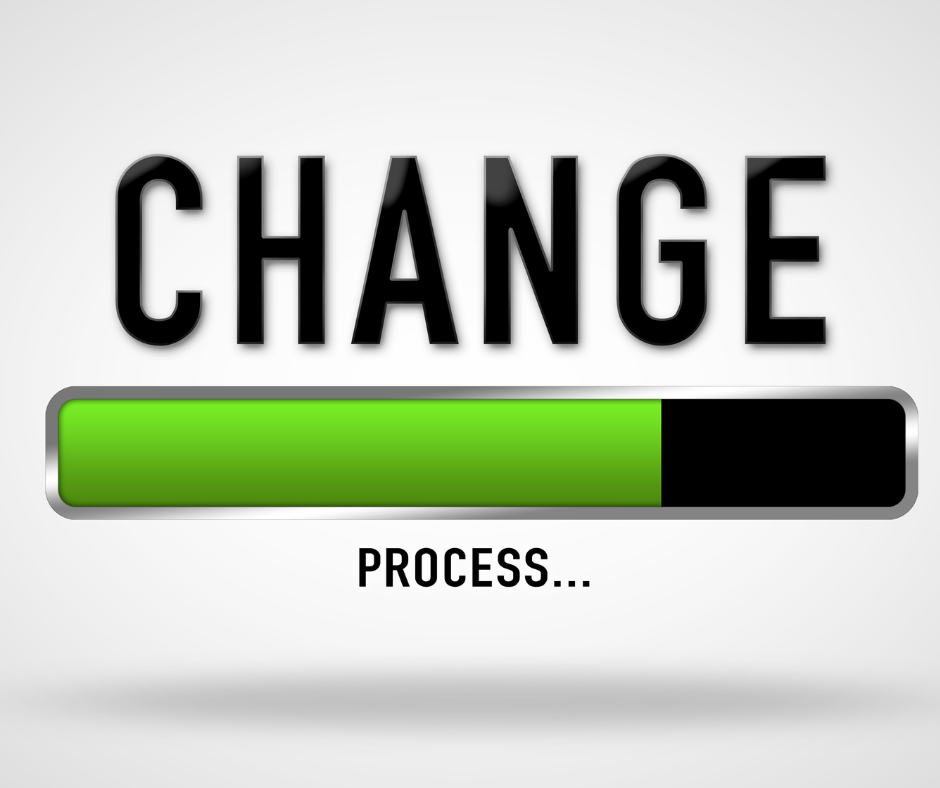Change is a Constant
Your body is in constant flux, with millions of cells transforming daily into a new version of themselves. The majestic universe we live in continues to expand yearly at 6.5 light years in every direction. Oddly, we appear wired to resist change and hang on to what we know, what is comfortable and reliable – even if the results we enjoy are far below anything we hoped for – or need.
Knowing this paradox about the human condition, the tug of war between physical reality and psychological comfort, our awareness is the key! Watching ourselves, if we notice our resistance to change, we know what to do about it. If we feel at odds with our new surroundings, the protocols or procedures, the new colleagues or boss, we can take stock and recognize our behaviors. We are once again caught between our realities. Leaders practice the awareness to know the difference and help their teams to do the same.
Probing The Process of Change
Here are some questions to ask yourself, or your team, about change – how you view change, avoid, or embrace it – and what happens when you do.
- Is it the change that makes you so uncomfortable – or the fact that you didn’t get to have “a say” (help create) in the change you face?
- Can you identify changes in your life that you forcefully resisted that had, in time, surprisingly positive outcomes for you?
- Are you concerned about the change itself or the insecurity of the “uncertainty phase” – where you feel like you are in “no man’s land”? Could you lose control – and if so, what are the consequences of that?
- If you are leading a team that is resisting change, are the noisiest people the majority of people or just the loudest?
- Could the physical symptoms that you have experienced, anxiety, insomnia, lackluster immunity, rashes, and weight changes, reflect your internal struggle with changes that are happening at work?
- Can you use the WHY question technique to help you determine the actual resistance you have toward change?
What is the WHY Question Technique?
To put it simply – you answer every statement with a why – normally, between 5 to 7 repetitions will help you get the root of your thought.
It is our human nature to confuse old brain patterns with present day beliefs or concerns. We naturally default to thinking as we have always thought. (An example is the “good old days” references. True, some things that we have lost are a real loss – but if you factually remembered the times as they were, those good old days were like today. People had good times and bad times, some people were helpful, some were harmful, money was tight, and people paid taxes and struggled to make due. We are wired to remember what we focus on.)
Often, our resistance to change is based on a reaction to something that happened years ago – or with a vastly different set of criteria – but we are unable to recognize the root of our resistance and consequently suffer the results of resistance.
Asking WHY is simple – here are a few tips:
- Begin with a question like – “What is it about this change that I do not agree with?” ( Possible answer: I don’t think it is fair to require people to wear purple on Fridays.”
- Continue with Why – “Why is it not fair to ask people to wear purple on Fridays?” (Possible answer: People should be able to choose what colors they wear. We are not toddlers!)
- Continue in the same vein – Why. “Why should they be able to choose what they wear to work?” (Possible answer: We are not the property of our company. Self-expression is a personal preference. Some of us prefer not to share it in public, and reserve our expression for private life.)
- Continue… As the inquiry continues, we begin to see some of the deeper feelings that are triggered by simple changes. Note the expressions of “Personal property” or “private life.”
However your inquiries proceed, the gentle and persistent “why” will take you to deeper levels of your resistance and that of your team. This is a great team exercise to do in the group and allows for discussion. Individually, it works really well with a trusted friend asking the why or doing it in a written journal.
Leaders Will Always Face Change
Leadership is constantly facing and leading change. I encourage you to read, listen, attend workshops, take courses, and pay attention to things around you. Cultivate a friendly relationship with the idea of change. Open your horizons to the possibilities beyond your status quo.






